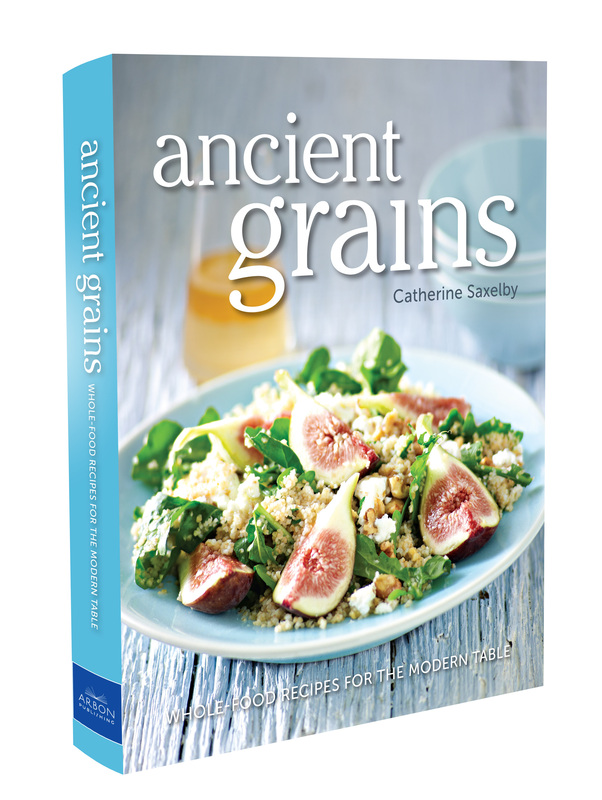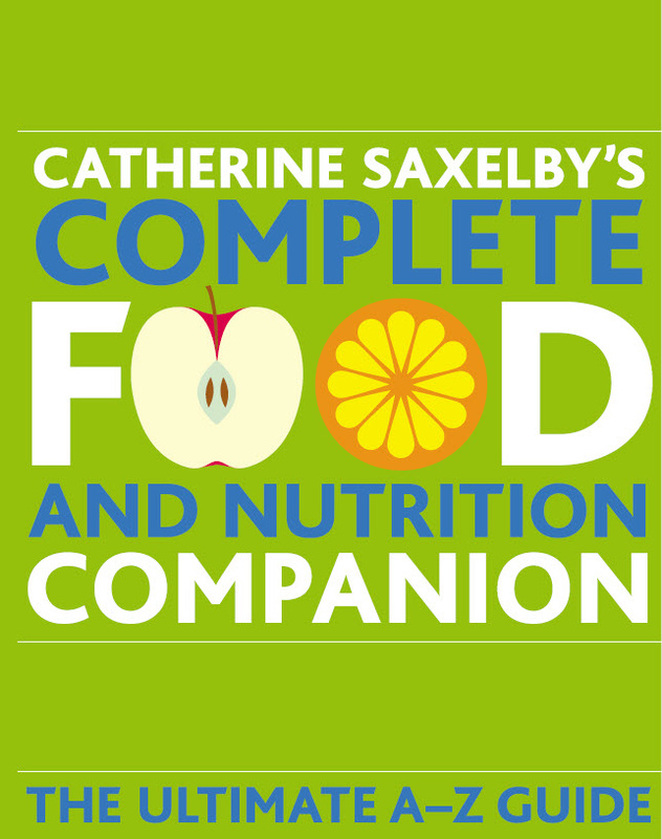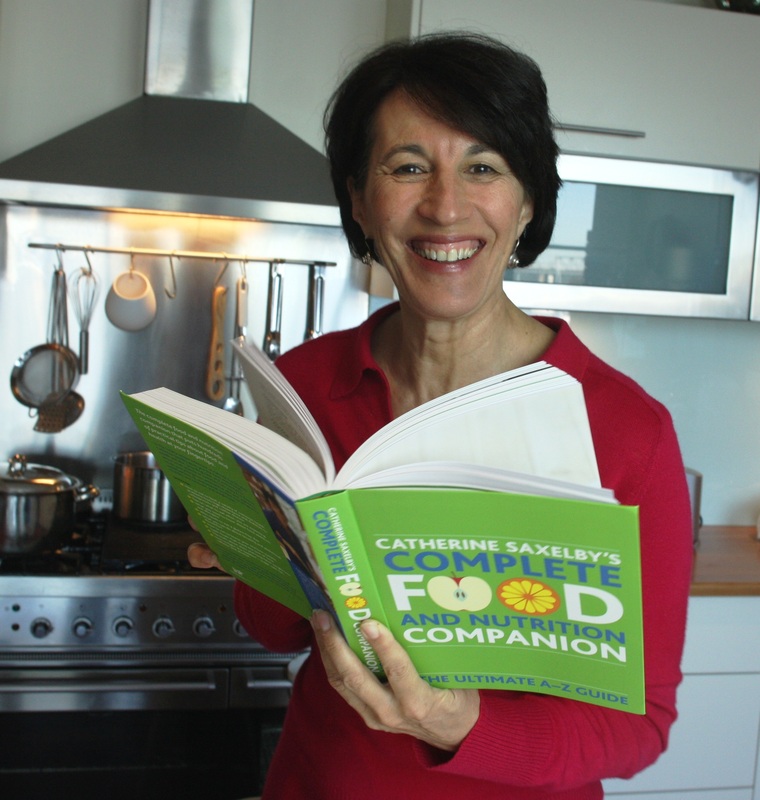|
Grab yourself a fork and let's tuck in to the delicious and nutritious Bulgur and Fig Salad on the cover of Ancient Grains: Whole-food Recipes for the Modern Table. This image sets the scene for the contents of the latest book from Australia's leading nutritionist and best-selling author, Catherine Saxelby, who enjoys great food and is keen to overturn the notion that grains can be bland and old-fashioned by revealing that cooking with ancient grains can offer a rich palette of flavourful meals.
0 Comments
We all live in busy times and some days getting a meal on the table can seem like a tedious chore, especially when we are constantly bombarded with constantly changing messages on food and diet.
Do you ever feel overwhelmed by nutritional information? What you should eat, when you should eat it, how you should cook it, what to eat it with… the advice is endless! Finally the answer to all of these questions and more is at our finger tips in Catherine Saxelby’s Complete Food and Nutrition Companion. As one of Australia’s most highly regarded nutritionists, Catherine has spent the past two years pouring her energy into compiling this 400 page book and she’s ready to bust all of those myths! I had the great pleasure of meeting Catherine early last year in Sydney and, having been an avid reader of her work for many years, I must say I was looking forward to reading the Complete Food and Nutrition Companion, Catherine's eleventh book, incidentally! We discussed the book recently and Catherine kindly answered some questions for me: First, what inspired you to become a nutritionist? 'It all started with my Science teacher! I loved the subject from Year 10 onwards. I was so fortunate as I know so many girls absolutely loathed Chemistry, Physics, Biology and Geology. I had the most wonderful and dedicated teacher – Sister Emmanuel, as I went to a Catholic girls school – for my final three years. She was a most accomplished teacher who built our knowledge gradually and sequentially over those three years. We really understood organic chemistry or the nitrogen cycle although I do admit that I did struggle a bit with Physics (all those scalors and vectors). Because I loved the subject, I took up a Science Degree at University but soon realised that there were only two job prospects – becoming a teacher which are not something I wanted (hey, I’d just finished 13 years of schooling) OR working in a smelly laboratory where chances were high that I’d singe my eyelashes regularly! Somehow I stumbled over the Graduate Diploma of Nutrition and Dietetics at the University of Sydney (these days, it’s a five-year Masters degree). It really resonated with me. Here I could discover everything about food and diets, yet put my love of chemistry and biochemistry into place. I would learn all the compounds that made up food, as well as researching different diets and eating strategies'. How long did the Complete Food and Nutrition Companion take to research and write? 'This book was HUGE! I spent two years researching, writing then re-writing, checking research stats, finding analyses for food products, and updating older articles or posts from my website. In nutrition, almost everything changes. So things I’d written a few years needed to be checked and updated – for example, breads now must be baked with iodised salt; folate (a B vitamin) is now added to many cereals, breads and some juices; most cereals and crispbread are now being labelled with their percentage of whole grains. And so it goes on. Never a dull moment in the world of nutrition!' What is the inspiration behind the book? 'I wanted to create a one-stop shop – call it a guide, compendium, bible or companion – that allows the reader to dip in and out yet quickly look out the answers to those many niggly things in nutrition. Having been a freelance writer for magazines and websites for the past 20 years, I have heaps of material to draw from ranging from anti-ageing to diabetic diets. Plus I’ve researched, written, blogged or spoken about many a food and diet. I felt like I was pouring all those years of writing between the covers. And I think it’s come together nicely'. (I agree wholeheartedly, Catherine!). I also asked Catherine some questions about interesting snippets I'd read in the book: Why not dissolve antibacterial/active honey in tea or lemon juice? 'I too did wonder the same thing! But I found out that the honey MUST come into direct contact undiluted with the target area (the throat) to work. Similarly if you want honey to help heal wound, it must be applied directly to the skin. Dissolving it in tea only dilutes the active ingredients done and reduces its effectiveness, according to the research'. On the Hunger and Fullness Scale, most people simply eat because it’s time to do so. Why do you think this is? 'So agree – we eat by the clock, by habit, by work routines and by whom we’re with. We don’t listen to our stomachs so end up eating more than we need. I use this scale often, I’ve found it’s a great tool to help you figure when you’re stomach-full and when to stop eating. I suggest you try eating by 0 to 10 on a quiet weekend when you can concentrate on your own feelings'. On the Section on additives, what are your thoughts on food labelling, broadly speaking? 'I like the Australian system of food labelling. Having just been in the US, our basic requirement – from ingredient list to the nutrition panel to allergen listing – give you so much more than the US food label which is constrained and dumbed down so much as to be not very meaningful. Yes, our Aussie label is not perfect, but if you learn how to use it, you get a lot more detail about what’s in that packet or can. Lizzy, I strongly urge your readers to make it their business to learn the eight elements that must appear on a food label. Don’t just read the claims on the front. Check if they’re true by reading the back and checking the figures. Here’s the three things I always look for on a label:
Are we best to stick to totally natural foods? Meat, fish and fruit and vegetables? '"Stick to the basics" is something I say a lot these days. Given the incredible amount of packet and processed foods and the wide availability of junk food everywhere from service stations or sport complexes, basic foods like vegetables, meat, fish, eggs, nuts, bread and legumes hardly get a look in. I know it sounds old-fashioned but you can’t go wrong with the basic five (or six or seven) food groups that we used to used to teach nutrition with. Snacks, treats, drinks, packet and processed foods are the things that cause problems in nutrition not the humbler milk, bread, vegetables or meat'. Lizzy's verdict: As with all A to Z guides, you don’t need to read this book from cover to cover, just dip in or use the index to direct you to all the information that is relevant to your wants and needs. With more than 500 entries covering whole foods, processed foods, additives, nutrients, supplements and more, this is the ultimate family reference for good health and nutrition. Further, the book offers a range of helpful tables and guides such as knowing how many kilojoules a day you need, recommended intakes of vitamins and minerals and safe maximums for supplements. Catherine Saxelby's Complete Food and Nutrition Companion (Hardie Grant Books) $45.00. With many thanks to Catherine and Hardie Grant Books for giving me the opportunity to review this excellent, informative book. |
BookshelfCookbook reviews and interviews with food writers and chefs. Titles/Authors
All
|



